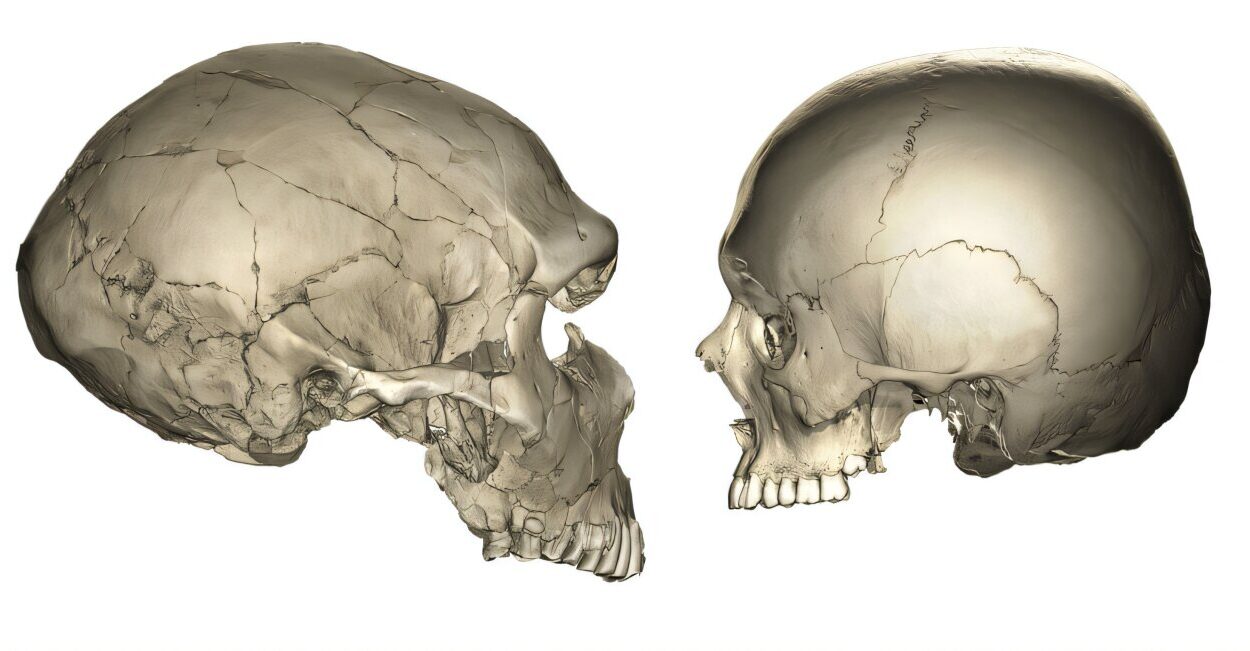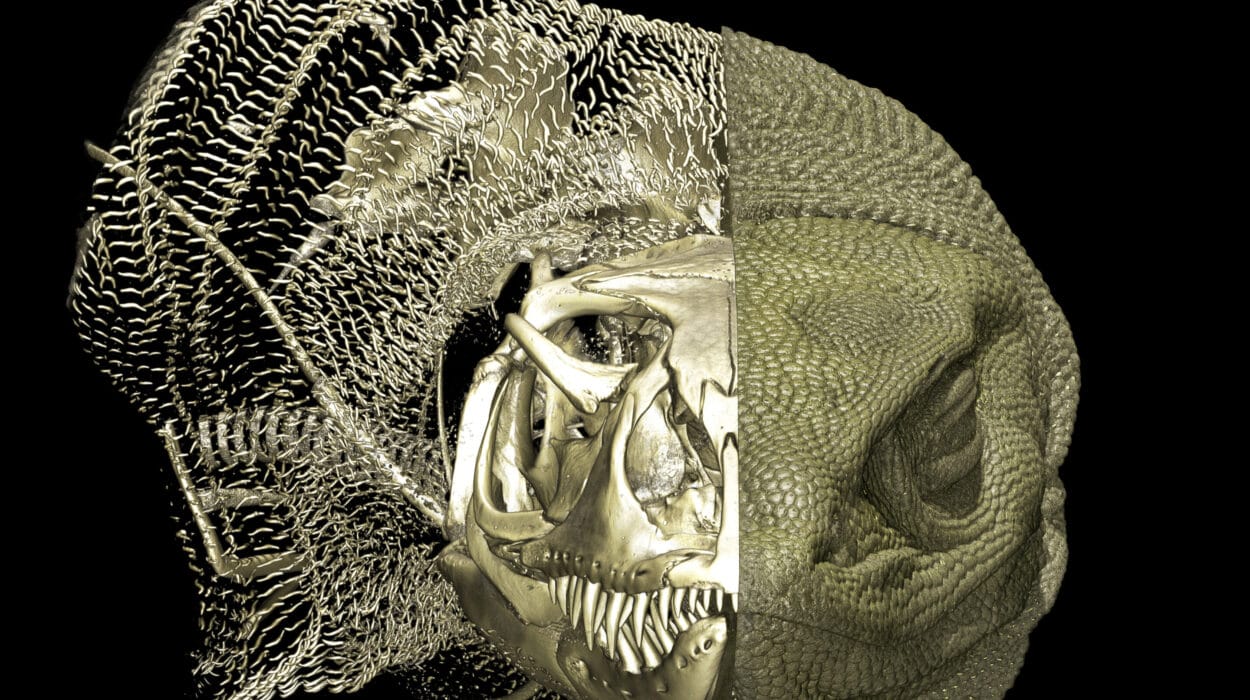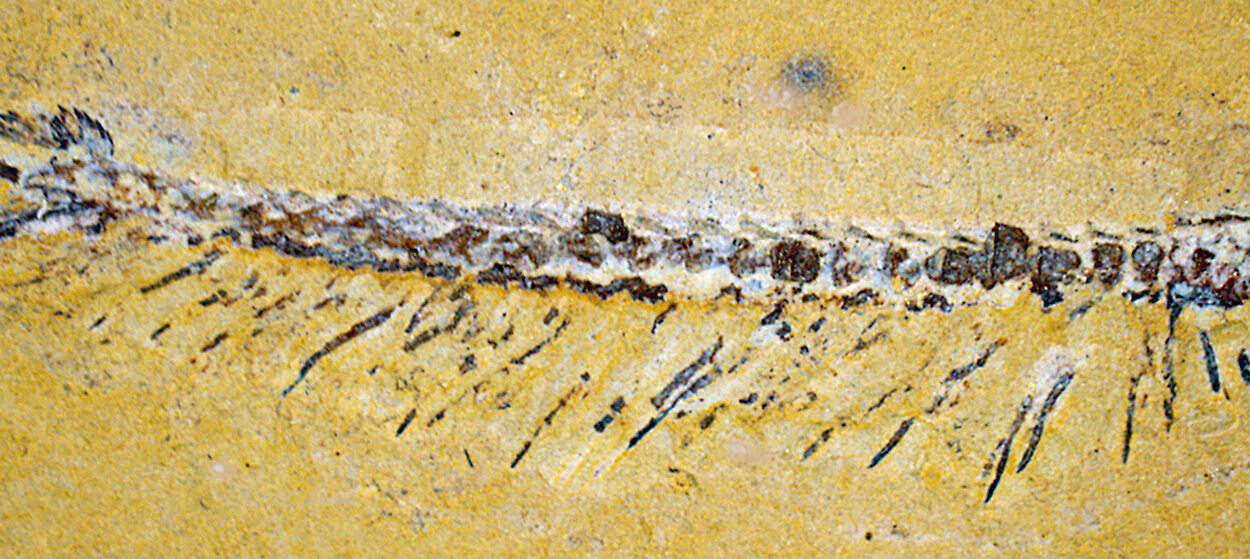Imagine walking along a shoreline that now stretches across modern-day Cleveland, Ohio. About 360 million years ago, this was a shallow sea, teeming with life—both strange and dangerous. Among the most fearsome of its inhabitants was Dunkleosteus terrelli, a 14-foot armored fish with razor-sharp bone blades for jaws instead of teeth. It ruled the Late Devonian seas with relentless efficiency, a true apex predator that would have been the terror of its underwater world.
Since its discovery in the 1860s, Dunkleosteus has become one of the most iconic prehistoric creatures, often featured in documentaries, museums, and textbooks. Its fearsome appearance, with its bony-plated skull and menacing mouthparts, has captured the imagination of both scientists and the public alike. But despite its fame, Dunkleosteus has remained a bit of a mystery for over ninety years.
Now, thanks to a groundbreaking study led by Case Western Reserve University, the secrets of Dunkleosteus are being unveiled once again. This research, published in The Anatomical Record, provides a new and detailed look at this ancient predator’s anatomy, behavior, and evolutionary history—offering fresh insights that even the most seasoned paleontologists didn’t expect.
A Century-Old Mystery Finally Solved
The last major examination of Dunkleosteus’ jaw anatomy was published in 1932, a time when scientists were still trying to piece together the puzzle of arthrodire anatomy. Arthrodires, the group Dunkleosteus belonged to, were strange creatures—fish-like beings covered in bony armor, resembling something between a shark and an armored tank. Because their bodies were largely composed of cartilage, their fossils were often crushed and flattened over time, leaving only their hard bony parts—mainly their heads and torsos—preserved.
In the early 20th century, scientists focused on reconstructing the puzzle of how these bones fit together. But detailed anatomical understanding was still lacking. Russell Engelman, a graduate student in biology at Case Western and lead author of the new study, explained the gap in knowledge: “Most of the work at that time focused on just figuring out how the bones fit back together.” But now, nearly a century later, with advances in fossil preservation and technology, Engelman and his team set out to revisit Dunkleosteus with modern methods.
With the help of well-preserved specimens housed at the Cleveland Museum of Natural History—home to the world’s largest and best-preserved collection of Dunkleosteus fossils—the team was able to bring the ancient fish into the 21st century. These fossils had been meticulously preserved in black shale rock, layers of which were exposed by nearby rivers and road construction projects, offering a rare glimpse into Dunkleosteus’ world.
New Revelations from Ancient Fossils
As the team pored over these specimens, they began uncovering surprises that no one had anticipated. One of the most striking findings was that nearly half of Dunkleosteus’ skull was composed of cartilage. For years, it was believed that Dunkleosteus’ skull was mostly bone, with cartilage playing a minor role. But this new analysis revealed that major jaw connections and muscle attachment sites were, in fact, made of cartilage. This discovery flipped the previous understanding on its head, offering an entirely new view of the predator’s anatomy.
In addition to the surprising role of cartilage, the researchers also identified a large bony channel within the jaw, housing a facial muscle remarkably similar to those found in modern sharks and rays. This was another first for Dunkleosteus, as it provided the best evidence yet that this ancient predator shared a key anatomical feature with some of the fiercest fish alive today.
Another major discovery was the fact that Dunkleosteus was, in many ways, an evolutionary oddball. Despite being one of the best-known members of the arthrodire group, Dunkleosteus was unique compared to its relatives. While most arthrodires had actual teeth, Dunkleosteus and some of its closest relatives evolved bone blades instead. These bone blades, rather than teeth, were the key to Dunkleosteus’ dominance in the ancient seas.
But Dunkleosteus wasn’t just different in terms of its teeth—it was also special in the way it adapted to its environment. While many arthrodires evolved in parallel to hunt large prey, Dunkleosteus’ bone-blades were part of a specific evolutionary path that allowed it to dominate a particular niche in the ecosystem. According to Engelman, “These discoveries highlight that arthrodires cannot be thought of as primitive, homogeneous animals, but instead a highly diverse group of fishes that flourished and occupied many different ecological roles during their history.”
A New Perspective on Evolution
What makes this study particularly significant is how it changes our understanding of Dunkleosteus and its place in the broader picture of evolutionary history. While Dunkleosteus has long been known for its bone blades, this new research places those features in a much more nuanced evolutionary context. The bone-blade adaptations of Dunkleosteus reflect an arms race of sorts, where the fish evolved specialized features to hunt other large marine predators. What the team uncovered was that Dunkleosteus’ bone-blades weren’t just an isolated phenomenon—they were part of a wider trend among arthrodires to develop unique adaptations to help them thrive as predators.
Before this study, Dunkleosteus was often viewed as the quintessential example of an arthrodire. But it turns out that Dunkleosteus was far more complex, an evolutionary outlier even among its own kind. Its adaptations made it a highly efficient predator, one that helped define the ecology of the ancient seas. “These findings transform our understanding of both Dunkleosteus specifically and arthrodire diversity more broadly,” Engelman remarked, underscoring just how much more there is to learn about this famous creature.
Why This Research Matters
This research is more than just an exciting new look at a well-known fossil. It opens up new possibilities for how we understand the evolutionary history of ancient marine life. By studying Dunkleosteus in such detail, Engelman and his team have shown that even the most famous fossils can hold surprises—new revelations that change the way we see the prehistoric world.
The study not only rewrites what we know about Dunkleosteus, but it also contributes to our understanding of early fish evolution. The discoveries about cartilage, jaw muscles, and bone blades reveal the complexity and diversity of prehistoric life, challenging our previous assumptions about these long-extinct creatures. Dunkleosteus is no longer just the “poster child” for arthrodires—it’s a window into an entire evolutionary ecosystem that flourished and adapted in ways we’re still only beginning to understand.
As we continue to study the fossils of ancient creatures like Dunkleosteus, we inch closer to understanding the broader story of life on Earth. This research is a reminder that the past is still full of mysteries waiting to be uncovered, and that even the most famous animals from history can still teach us something new.
More information: Functional anatomy, jaw mechanisms, and feeding behavior of Dunkleosteus terrelli, The Anatomical Record (2025). anatomypubs.onlinelibrary.wile … doi/10.1002/ar.70075






